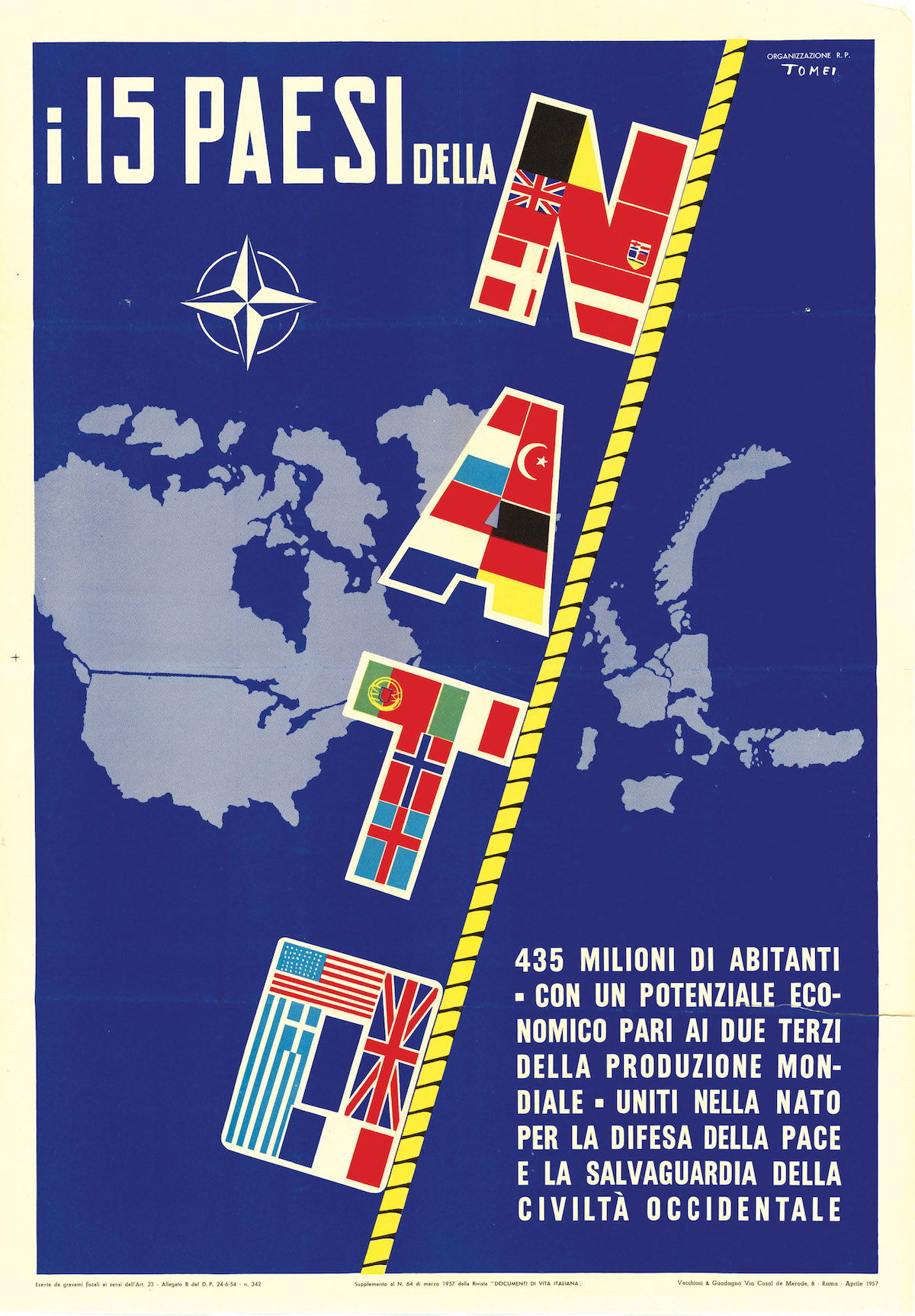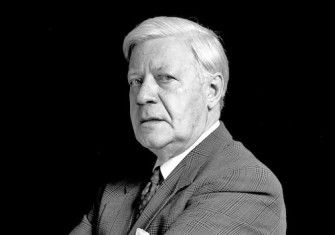‘Deterring Armageddon’ by Peter Apps and ‘NATO’ by Sten Rynning review
As Deterring Armageddon: A Biography of NATO and NATO: From Cold War to Ukraine, a History of the World’s Most Powerful Alliance make clear, at almost every point in the last 75 years the alliance's future has looked uncertain.

‘Semisesquicentennial’ does not roll off the tongue, nor would such an occasion normally be marked by publishers. But the North Atlantic Treaty Organization’s 75th anniversary, which arrives on 4 April 2024, has already led to the publication of a brace of new books about the past and future of the alliance which, with the recent accession of Finland, now counts 31 states among its members.
With the war in Ukraine – which has re-energised NATO even as it has kept its own involvement in a state of deliberate ambiguity – entering its third year, it is unsurprising that there should be renewed interest in the North Atlantic alliance. But underneath it all is a sense of anxiety, widely but quietly shared, that NATO may not live to see its centenary. This anniversary may be the last big one and thus a particularly appropriate time to assess what NATO has accomplished so far and guess what its future will hold.
Peter Apps’ contribution to the occasion, Deterring Armageddon, is a straightforward and breezy history of NATO. A former Reuters correspondent and British army reservist, Apps has an eye for the dramatic, and the book’s almost 500 pages contain few longueurs despite much of it being concerned with bureaucratic debates among politicians with dimly remembered names.
Like a classical tragedy, the story of NATO’s creation, as retold by Apps, possessed unity of action, time and place. The men who assisted in its establishment and who shepherded it through its first years of existence were dramatic figures in their own right. There was Ernest Bevin, the unskilled labourer turned world statesman of the nuclear age. There was Dwight D. Eisenhower, for whom supreme military command of NATO provided a welcome escape from the ennui of peacetime university administration. And there was the middle-ranking Europhile American diplomat with the impossibly WASPish name of Theodore C. Achilles, who hoped the Atlantic alliance would one day turn into a federal union.
Disparate though their backgrounds were, they were united in their goals: to prevent the Soviet Union from destroying the freedom of those European peoples not yet under its yoke, to provide a lasting security architecture for the continent, and to do so in a way which would defeat the United States’ long-established mental inhibition against permanent foreign entanglements.
Acting with a singleness of purpose, they overcame America’s isolationist instincts and intra-European distrust to draft the North Atlantic Treaty, a mere four years after the ravages of the Second World War, creating a structure which has survived, in remarkably similar form, to the present day. As Apps reminds his readers, in 2024 NATO will just have surpassed the Delian League, founded in the fifth century BC, as the longest-lasting multilateral military alliance in history.
After the heroic moment of creation, NATO quickly settled into all too familiar patterns which are instantly recognisable today. There is the perennial transatlantic war of words about Europe’s inadequate financial and material contributions towards its own defence. There is America’s contradictory attitude towards the idea of European unity, which it alternately championed and resented. Above all, there is the ever-lurking fear of the imminent death of NATO, often foretold but never quite realised, not even in 1963 when France withdrew from its military structure and expelled its headquarters in a Gaullist fit of pique, forcing a relocation to Belgium.
Yet at critical junctures during the Cold War, the institutional NATO (or, NATO qua NATO), as opposed to the metonymic NATO of the US and its principal Western allies, usually sat on the sidelines. During the Cuban Missile Crisis NATO’s formal military command structures were bypassed as the US and key NATO militaries took unilateral action, sometimes without political authorisation from their own governments. Later, rising anti-NATO and anti-American sentiments in Europe, in addition to the success of far-left parties in Portugal and Greece, added to the alliance’s difficulties.
Ironically, it was only after the end of the Cold War that NATO found itself firing shots in anger, first in the Balkans, then in the Middle East. Though beset by problems, its foray into the Balkans could be reckoned as a success. The same could not be said for its participation in the war in Afghanistan, which was preceded by the first ever invocation of the famous Article 5 – the collective defence clause of the North Atlantic Treaty – after the September 11 terrorist attacks. Even this moment of reverse trans-Atlantic solidarity almost did not happen, as senior members of the US government were unwilling to involve NATO, lest it limit America’s freedom of action later on.
All the while, Russia, the old foe, lurked in the background. Though Boris Yeltsin had made vague noises about taking Russia into NATO, the alliance’s expansion into Eastern Europe clearly spooked Russia’s leadership. Russian belief that it had received assurances from the US that this would not happen would prove to be a constant source of Russian grievance, which it now often uses as justification for its invasion of Ukraine.
Where is NATO headed next, with a hot war raging near its borders and with increasingly diverging views among its members about its degree of involvement in the conflict? Apps does not commit himself to an answer, probably wisely. All that can really be said is that although NATO may be ‘a very imperfect institution, one perpetually beset by divisions’, it is far better to be bickering inside it than to be left outside, as Ukraine has been finding out every day of the past decade.
The repetitive nature of NATO’s history also provides the starting point for Sten Rynning’s contribution to the anniversary, NATO: From Cold War to Ukraine, a History of the World’s Most Powerful Alliance. A Danish academic specialising in NATO, Rynning begins his book in severe didactic fashion, with subheadings laying down prescriptions such as ‘How to think about NATO’ and ‘NATO’s future must not resemble its past’. Yet the end product is a subtle and thought-provoking book, unflinching in its sober realism about the tensions at the core of NATO’s existence.
Rynning argues that NATO’s history is characterised by cycles of boom and bust between moments of great ambition – its initial establishment in 1949 and the collapse of the Soviet Union – and the subsequent disillusionment, as the alliance struggled with closing the gap between aspiration and reality. Unusually, instead of beginning his narrative at the conclusion of the Second World War, Rynning chooses 1939 as his starting point, when US engagement with the world stood on the brink of a permanent transformation.
Postwar America, Rynning writes, had initially aimed to create a global collective security regime, a new world order based on cooperation and the fostering of communities of shared values, with the United Nations at its core. It is not for nothing that Article 1 of the North Atlantic Treaty (an astonishingly elegant document, which the book helpfully reprints in full) speaks of compliance with the UN Charter, while Article 2, a Canadian initiative, is concerned with the fostering of non-military co-operation and understanding among NATO members – in other words, of a genuine Atlantic political community.
Europe, meanwhile, remained steeped in its balance-of-power traditions, particularly as Western Europe still viewed defeated Germany as an existential threat. European countries needed America to protect them, but they did not wish to be transformed by the strategic ideals of the New World. They quickly found out that they were no longer in the driver’s seat. Through NATO, the US had permanently acquired the status of a European power, with all that entailed for both sides.
In any event, the high-minded communitarian Atlanticism of NATO’s early years had faded by the early 1960s, dissipated by constant infighting among its members. Instead, the alliance fell into its now-familiar narrow military role, while political action mostly took place outside of its structures. By the late 1970s, Rynning argues, NATO had become an essentially conservative alliance whose members could at best hope to preserve its continuous existence as a military deterrent against the Soviet Union, having given up the idea of politically transforming Europe through the organisation.
The collapse of the Soviet Union provided the catalyst for NATO’s second cycle of ambition, as it became feebler militarily – the famous ‘peace dividend’, extracted through the attrition of NATO armed forces – while the alliance hoped to reconcile Russia to it as part of a continental grand bargain, just as it had helped to reconcile Germany with Western Europe four decades previously. That did not work. Russia did not reconcile to NATO, but embarked on revanchist wars instead. The hopes of an earlier generation of NATO leaders shattered.
Rynning presents two possible future directions for NATO: a ‘NATO transformed’, which would shift its sights towards rising China, or a ‘NATO classic’, which would focus on the Euro-Atlantic area as it has always done. He favours the latter, as both the more realistic choice and the option which has been consistently pursued by NATO over several decades. Other prescriptions – less summitry, more European involvement, and less dependence on the US – would be familiar to NATO diplomats of every generation. ‘People tire of armies, however much they need them’, Rynning quotes a Belgian NATO ambassador as saying. Therein lies the great challenge for democratic peoples who seek to preserve their ways of life.
-
Deterring Armageddon: A Biography of NATO
Peter Apps
Wildfire, 624pp, £25
Buy from bookshop.org (affiliate link) -
NATO: From Cold War to Ukraine, a History of the World’s Most Powerful Alliance
Sten Rynning
Yale University Press, 368pp, £20
Buy from bookshop.org (affiliate link)
Yuan Yi Zhu is Assistant Professor of International Relations and International Law at Leiden University.






